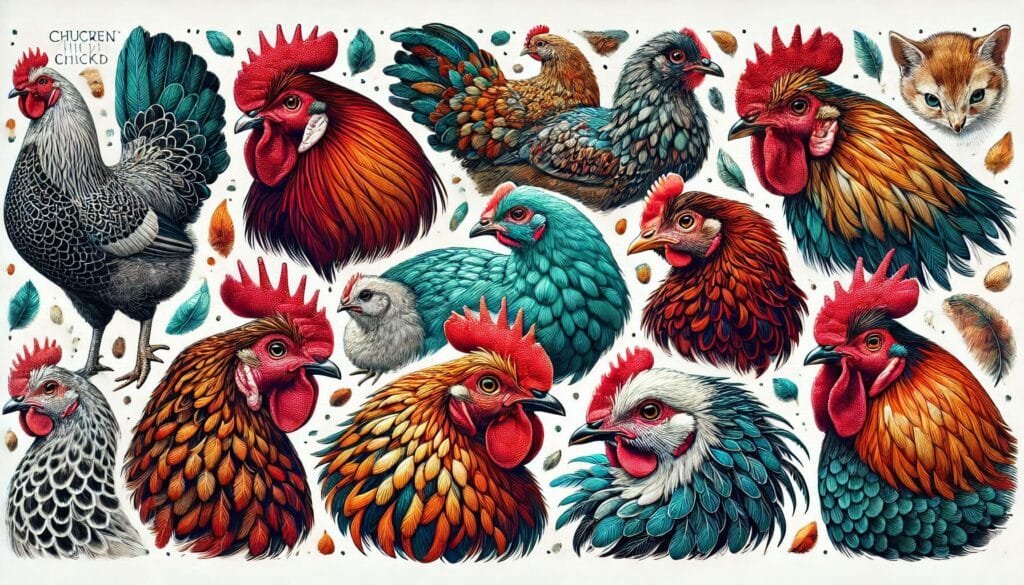Top Egg-Laying Chicken Breeds

Introduction
Choosing the right chicken breed can significantly impact your egg production. Whether you’re a seasoned farmer or a backyard enthusiast, understanding which breeds lay the most eggs is crucial. This article explores various egg-laying chicken breeds, their characteristics, and what makes them suitable for different farming environments.
Why Choose Egg-Laying Breeds?
Egg-laying breeds are specifically selected for their ability to produce eggs consistently. These chickens not only provide a reliable source of fresh eggs but also offer various benefits such as hardiness and adaptability. Understanding these breeds can help you make informed decisions for your poultry farm.
Top Egg-Laying Breeds
1. Leghorn
Leghorns are among the most prolific egg layers. They are known for their white eggs and can produce between 280 to 320 eggs annually. Their energetic nature makes them ideal for larger farms.
Characteristics of Leghorns
- Egg Color: White
- Annual Production: 280-320 eggs
- Temperament: Active and hardy
For more information on Leghorns, you can visit The Livestock Conservancy.
2. Rhode Island Red
Rhode Island Reds are famous for their brown eggs and consistent production of about 250 to 300 eggs per year. They are hardy birds that thrive in various climates.
Characteristics of Rhode Island Reds
- Egg Color: Brown
- Annual Production: 250-300 eggs
- Temperament: Adaptable and friendly
Learn more about Rhode Island Reds at Backyard Chickens.
3. Plymouth Rock (Barred Rock)
Plymouth Rocks are dual-purpose birds valued for both their meat and egg production. They lay approximately 200 to 280 brown eggs annually.
Characteristics of Plymouth Rocks
- Egg Color: Brown
- Annual Production: 200-280 eggs
- Temperament: Friendly and sociable
For additional details on Plymouth Rocks, check out The Spruce Pets.
4. Australorp
Australorps hold a world record for egg production, with some hens laying over 300 eggs in a year. They produce brown eggs and are known for their calm demeanor.
Characteristics of Australorps
- Egg Color: Brown
- Annual Production: Over 300 eggs
- Temperament: Calm and gentle
Find out more about Australorps at The Happy Chicken Coop.
5. Sussex
Sussex chickens are recognized as dual-purpose birds, excelling in both egg production and meat quality. They are reliable layers with good temperament.
Characteristics of Sussex
- Egg Color: Brown
- Annual Production: Varies (typically around 250)
- Temperament: Friendly and docile
For further insights into Sussex chickens, visit My Pet Chicken.
6. Orpington
Orpingtons, particularly the Buff Orpington variety, are excellent layers of brown eggs. They come in various colors and are appreciated for their friendly temperament.
Characteristics of Orpingtons
- Egg Color: Brown
- Annual Production: Around 200-280 eggs
- Temperament: Friendly and good mothers
To learn more about Orpingtons, refer to Cackle Hatchery.
Factors to Consider When Choosing Egg-Laying Breeds
When selecting a breed, consider the following factors:
Climate Adaptability
Some breeds perform better in specific climates than others. For instance, Rhode Island Reds thrive in colder climates due to their hardiness.
Space Requirements
Different breeds have varying space needs. Leghorns require more space due to their energetic nature compared to calmer breeds like Australorps.
Purpose of Raising Chickens
Decide whether you want chickens solely for egg production or if you also want meat production. Dual-purpose breeds like Plymouth Rocks and Sussex can serve both purposes effectively.
Care Tips for Egg-Laying Chickens
Proper care is essential for maximizing egg production:
Nutrition
Provide a balanced diet rich in protein to enhance egg production. Layer feeds specifically designed for laying hens can help meet their nutritional needs.
Housing
Ensure that your chickens have adequate space, ventilation, and protection from predators. A comfortable coop contributes significantly to their overall health and productivity.
Health Management
Regular health checks are vital to prevent diseases that could affect egg production. Vaccinations and parasite control should be part of your routine management practices.
Conclusion
Choosing the right egg-laying chicken breed is crucial for successful poultry farming. By understanding the characteristics of each breed, you can select those that best fit your needs and environment. Whether you prefer prolific layers like Leghorns or dual-purpose breeds like Sussex, each offers unique advantages that can benefit your farm.
More from Genetics and Animal Breeding:
Estimating Sires: Progeny Testing and Threshold Models
Heritability Estimates in Animal Breeding




Responses